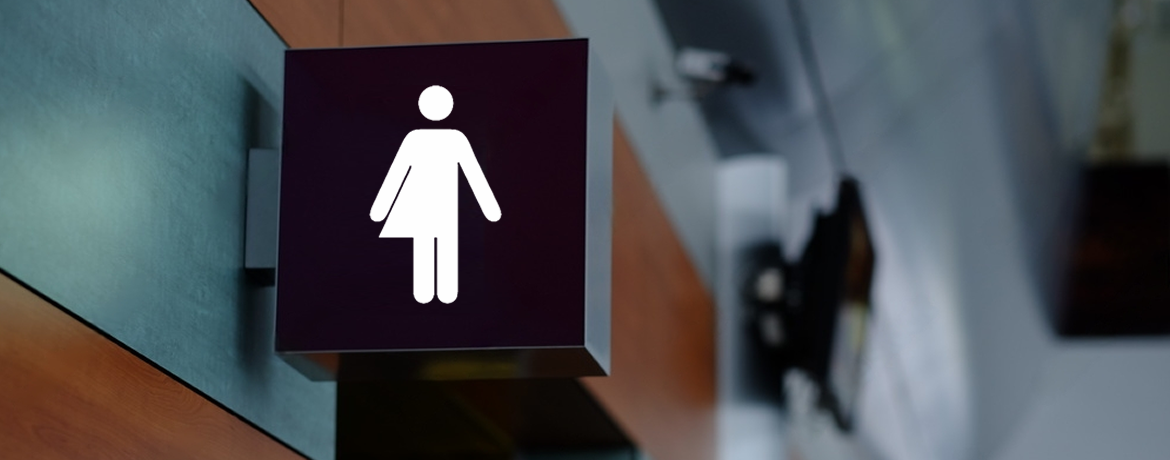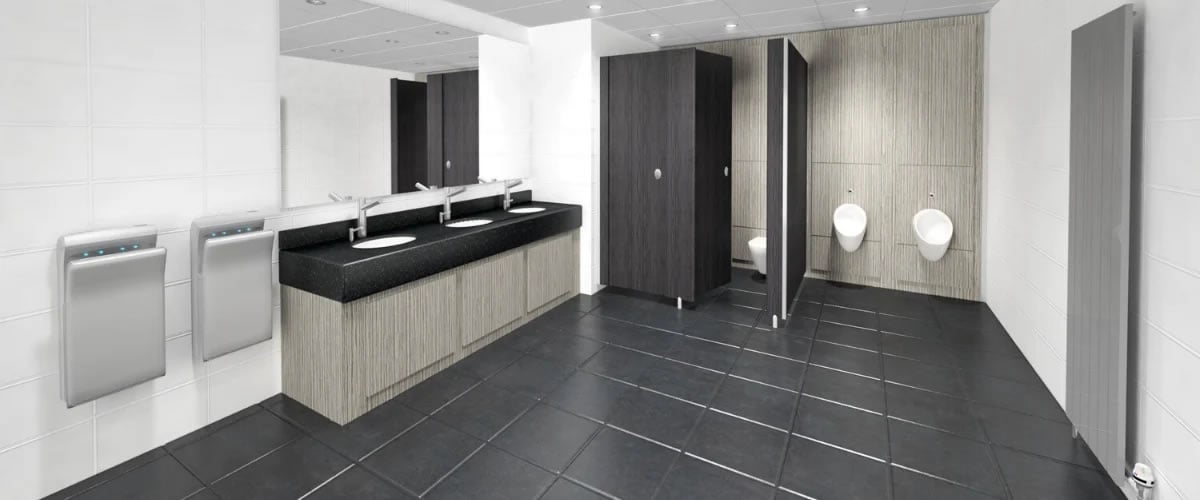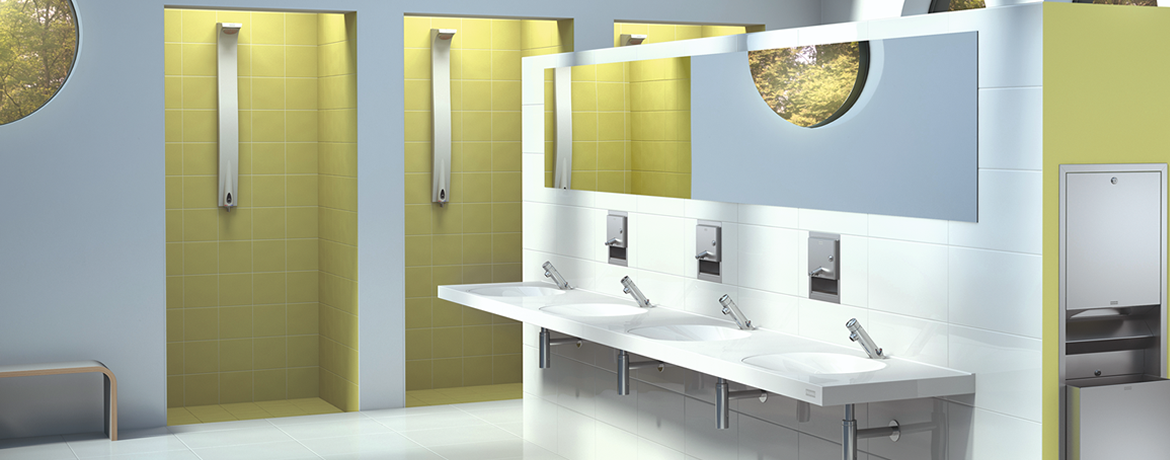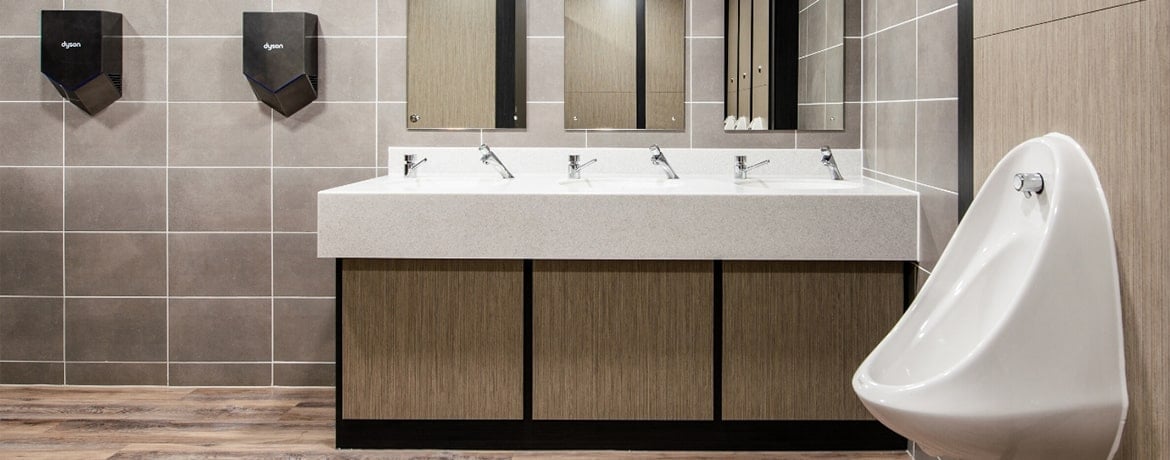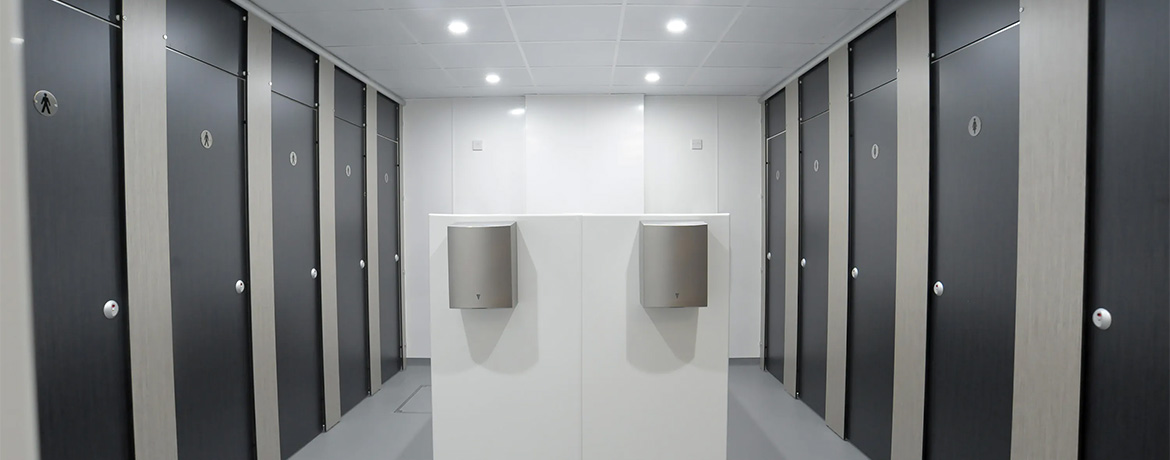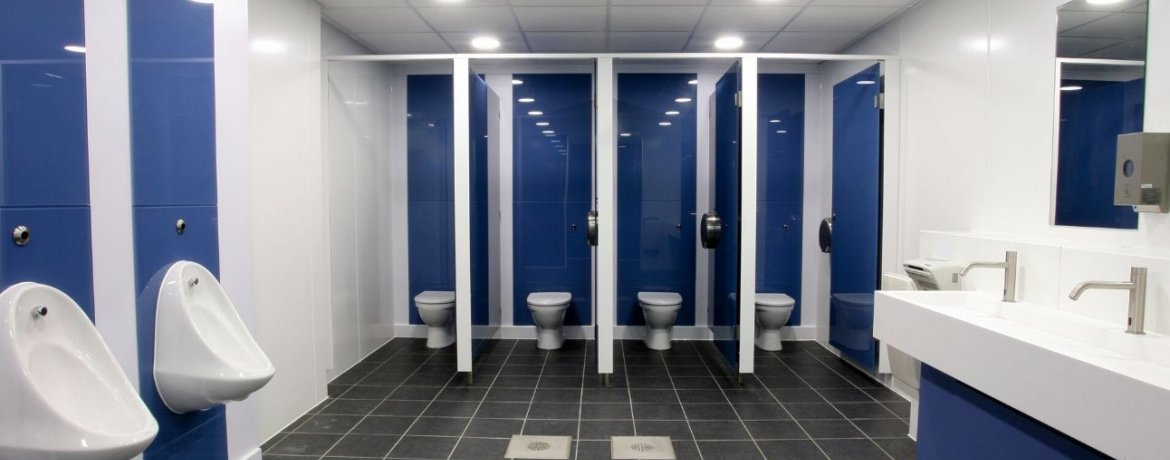How To Make Your Washroom Eco-Friendly

In today's world, sustainability is not just a trend; it's a necessity. As businesses become more environmentally conscious, the focus on eco-friendly washrooms has grown significantly. Here's an updated guide on how to make your washroom more eco-friendly.
1. Water-Saving Fixtures:
Install low-flow toilets, taps, and urinals. These fixtures can reduce water consumption by up to 50%. Additionally, consider integrating greywater recycling systems that collect and treat water from sinks and showers, allowing it to be reused for flushing toilets.
2. Energy-Efficient Hand Dryers:
Modern hand dryers are designed to dry hands quickly using minimal energy. They are a more sustainable alternative to paper towels.
3. LED Lighting:
Switch to LED lights which consume less energy and have a longer lifespan than traditional bulbs. Combine this with solar power integration by installing solar panels to power washroom facilities, reducing reliance on non-renewable energy sources.
4. Eco-friendly Materials:
Use paints with low or no VOCs (Volatile Organic Compounds) to ensure better air quality. Extend this principle to flooring by considering sustainable materials like bamboo or recycled tiles.
5. Biodegradable Consumables:
Opt for biodegradable toilet paper, hand towels, and soaps. These products break down more quickly and naturally, reducing waste.
6. Green Wall Installations:
Incorporate living plants into your washroom design. They not only improve air quality but also provide a calming, natural ambience.
7. Digital Monitoring Systems:
Modernise your washroom with systems that monitor water and electricity consumption in real-time. This technology allows for immediate adjustments and reduced wastage.
8. Natural Ventilation:
Design your washroom to encourage natural airflow. This reduces the need for electric ventilation systems and improves indoor air quality.
9. Eco-friendly Waste Disposal:
Provide bins specifically for recyclable materials and consider composting options for biodegradable waste.
10. Educational Signage:
Place signs that promote water conservation, proper waste disposal, and other green practices. Educating users can amplify your eco-friendly efforts.
11. Modular Systems:
These pre-fabricated systems are not only efficient in space utilisation but are also designed with sustainability in mind.
12. Sensor-Operated Fixtures:
These fixtures reduce water wastage by ensuring taps are not left running. They also promote hygiene by reducing touchpoints.
13. Vertical Storage and Sliding Doors:
Utilise space efficiently with wall-mounted storage units and sliding doors, especially in tight spaces.
14. Corner Units and Mirrored Cabinets:
Make use of often overlooked spaces with corner sinks and toilets. Mirrored cabinets serve a dual purpose, providing storage and a mirror, saving wall space.
15. Universal Design:
Integrate adaptive fixtures like foldable grab bars and adjustable sinks without compromising on space.
16. Digital Integration:
Enhance the user experience with occupancy sensors or app-controlled fixtures, adding a touch of modernity.
17. Sustainable Features:
Integrate green features like greywater recycling systems or water-efficient fixtures without taking up excessive space.
In Summary
Making your washroom eco-friendly isn’t the hugely daunting task you might think it is and you don’t necessarily have to have a complete washroom refurbishment to put some of these options in place. In almost all cases, the eco options you install are not only better for the environment but are better for your business in financial terms too. When you combine the savings that are available across water and electricity usage, the justification for their instalment is clear as day.

